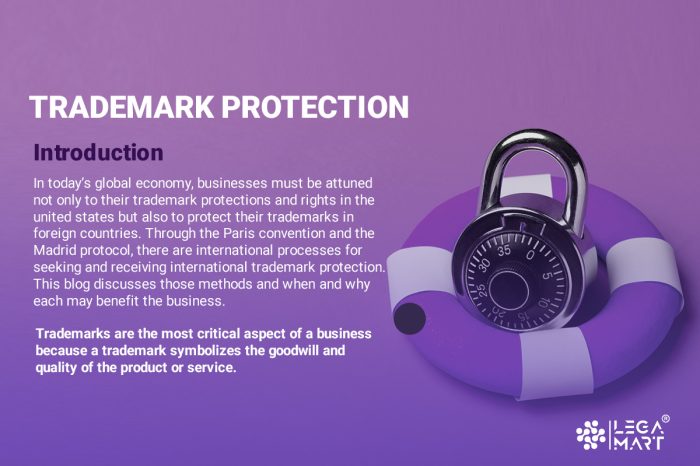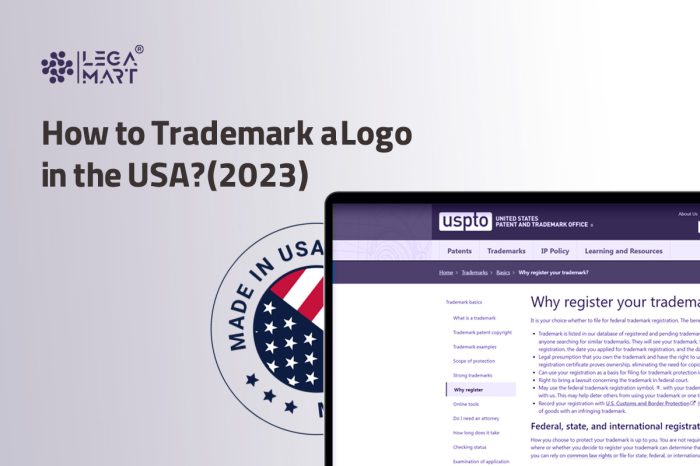International trademark
An international trademark is a trademark that is registered or protected in multiple countries through a single application or registration process, such as the Madrid System. Companies and businessmen must ensure that their trademarks comply with international legal requirements, such as the Paris Convention or the Madrid Agreement, to obtain international protection and avoid legal issues, such as trademark infringement or counterfeiting. In case of disputes, companies should seek legal advice from local lawyers with expertise in trademark law and international litigation.
Find best lawyers for International trademark
Issues related to International trademark
How to register it?
There are a few ways to register your trademark internationally. The most common is to file for registration in each country where you want to protect your trademark. This can be done through the national intellectual property office in that country.
Another way to register your trademark internationally is through the Madrid Protocol. This international treaty provides a streamlined process for filing trademarks in multiple countries. To use this system, you must first file a trademark application with the US Patent and Trademark Office (USPTO). Then, you can file an “international application” with the World Intellectual Property Organization (WIPO), which designates the countries where you want protection. Your international application will then be forwarded to the national intellectual property.
How to deal with international trademark infringement:
Depending on the situation, there are a few different ways to deal with international trademark infringement. First, if you believe someone is using your trademark without permission, you can send them a cease and desist letter. This is a formal request for them to stop using your trademark. If they don’t comply, you can file a lawsuit against them.
Another option is to work with an international law firm specialising in intellectual property law. They can help protect your rights and take legal action if necessary. In some cases, it may also be possible to negotiate with the infringing party and come to an agreement.
Ultimately, the best way to deal with international trademark infringement will vary depending on the situation.
However, if the infringement is more severe or the cease and desist letter is ignored, you may need legal action. This can be done by filing a lawsuit in the country where the infringement is taking place. Alternatively, you can file a complaint with the World Intellectual Property Organization (WIPO).

How to protect the international trademark:
There are a few things you can do to protect your international trademark:
- Make sure your trademark is registered in each country where you plan to do business.
- Use the ® symbol next to your trademark name.
- Put a notice on your website’s homepage (or any other page with significant traffic) stating that your trademark is registered internationally.
- Make sure all your branding and marketing materials use your registered trademark name and symbol.
- Enforce your trademarks against violators – this can include sending cease and desist letters, filing lawsuits, or seeking out online forums and blogs where people are discussing or infringing on your mark and requesting they remove the infringing.
-
In the UK
-
In the Us
-
In South Africa
-
In China
In the UK
The United Kingdom trade mark law protects trademarks in the UK.
In UK law, as in most common law countries other than the United States and Canada, the term is written as “trade mark” (as in the Trade Marks Act 1994), not “trademark”.
Using someone’s trade mark, patent, copyright or design without their permission is known as ‘ IP infringement’ and could lead to a fine, prison or both.
What are the consequences of trademark infringement UK?
Six months and/or an unlimited fine. Ten years and/or a fine. (ii)knows or has reason to believe that infringing the right will cause loss to the owner or expose the owner of the right to a risk of loss. (b)Loss includes a loss by not getting what one might get.
The registration of trade marks in the UK is achieved through the UK Intellectual Property Office (UKIPO). If the UKIPO accepts registration, several exclusive rights are bestowed upon the trade mark owner. These rights allow the owner to prevent unauthorised use of the mark on products identical or similar to the registered mark.
When a trade mark application is made to the UKIPO, it examines the application to decide whether it is being applied for is distinctive enough to be a trade mark. Registration usually takes about three and a half to four months. However, this period can be significantly increased if any objections are raised to the mark’s registration by owners of similar registered trade marks or by the UKIPO themselves. Once a trademark is registered, it is kept on the register for ten years, after which it needs to be renewed to preserve the owner’s rights over it. It can also be allowed to lapse.
Trade marks are registered in one or more of the 45 classes. There are 34 classes of goods and 11 services. These classes group products deemed similar in function and are identified by their number. For example, the registration of a trade mark for a range of gymnastic and sporting articles is classified by the trademark registry in “class 28”.
Some of the main objections that the UKIPO will make when trademarks are submitted for registration are usually related to the “distinctiveness” of the mark. An inherently distinctive mark is the easiest to register, as it has no prior meaning. These marks are not to be found in dictionaries. An excellent example of such a distinctive trademark is iPod.
Words that appear in the dictionary can still be registered. However, these arbitrary trademarks are meaningless in the context of their use—for example, Apple Computer or Apple Corps.
Suggestive trade marks do not describe a product characteristic, but with some imagination, they are identifiable with their connected product. For example, ColdSeal Windows.
Descriptive trade marks use words in the dictionary describing the product to which they relate. They are usually difficult to register, and the registrar needs to prove that the mark has become distinctive through its long-term use. Descriptive marks can be made distinctive by adding other elements to the name or logo.
In the Us
Before registering a trademark in Us,
- Know that the application becomes a public record.
- Determine what type of trademark you want to register.
- Search for a trademark that’s confusingly similar to yours.
- Identify and classify your goods or services.
- Know your filing basis.
- Choose your application form.
The cost to trademark a logo with the U.S. Patent and Trademark Office (USPTO) is $275–$660. Registering a trademark with your state for $50-$150, but federal registration offers more legal protection. The United States Patent and Trademark Office (USPTO) provides trademark applications and instructions to walk applicants through the process on its website. In addition, the United States Patent and Trademark Office (USPTO) encourages online filing via TEAS (Trademark Electronic Application System) on its website. Usually, the process takes 12 to 18 months. Registering your trademark is a complex procedure that involves your application moving through various stages. If you are foreign-domiciled, you must use a U.S.-licensed attorney to file your trademark-related submissions with the USPTO. This requirement also applies to all Canadian applicants, registrants, and parties. You should get an LLC before a trademark because the trademark application must identify the LLC as the trademark owner. You should create an LLC or business entity before you file a trademark application. Trademark protection is less expensive and faster to obtain than patent protection, and trademarks can be more easily registered in foreign countries.
A trademark can be valuable to a startup because it identifies the source of goods or services. Inventions and creative works of art cannot be trademarked. Some brand elements cannot be trademarked because they do not identify the source of a product or service. Names and logos that are too similar to an existing trademark cannot be trademarked. Registering your trademark with the USPTO creates rights throughout the entire United States and its territories and includes your registration in our publicly accessible database of registered trademarks. Copyrights primarily protect the rights of people who create literary, dramatic, musical, artistic, and other intellectual works (like history tests and software code). Trademarks protect the use of a company’s name and its product names, brand identity (like logos) and slogans.
In South Africa
Trademarks are registered at the South African Trademarks Office, and foreign registrations may be obtained should you wish to market your product in foreign countries. Trademark attorneys would require you to provide them with a copy of your intended trademark (name, slogan, or logo) and details of all products or services to which you intend to apply for the trademark. Trademarks are registered at the South African Trademarks Office, and separate foreign trademark registrations should only be obtained if you wish to market your product in foreign countries. Registering a trademark in South Africa can take up to a year. To be considered registrable, your trademark must be capable of distinguishing your goods or services from those of your competitors. IP attorneys can search the records at the South African Trademarks Office. Trademarks are register-able in the South African Trademarks Act No 194 and are subject to specific requirements. For example, competitors may imitate your product if you build a brand reputation. To ensure that the public does not confuse your goods or services with those of your competitors, registering a trademark is a cost-effective way of protecting your brand and reputation. Once a trademark is registered in South Africa, it must be renewed every ten years to stay in force. Unlike patents, registered designs and copyright, trademarks do not expire after a set period. You lose your trademark and rights when you fail to renew and pay the renewal fees. The common law will still protect your trademark if you don’t register it. Registering your trademark, however, gives it more protection under the Trade Marks Act 194 of 1993. If you want to register your trademark, you need to ask yourself:
There are different ways to register a trademark. For example, you could ask a law firm to do it. Or you can do it yourself with online legal services.
In LegaMart, we follow a three-step process:
Search: this tells us if you can register the trade mark or if there are any conflicts;
Application: this is the paperwork that we hand in to register the trademark;
Registration: This includes specific actions required by law, like notice of acceptance, advertisement, and preparing the registration certificate.
The search step is the shortest – about two weeks. It picks out marks that look, sound and have a similar concept to your trade mark. You can choose a simple search (which will search for only fundamental conflicts) or an entire search (which will search for everything). This should let you know if it is viable to register the trade mark. If there are conflicts between your trade mark and someone else’s, you probably shouldn’t register it. After all, the purpose of a trademark is to distinguish your goods and services from someone else’s. The application step can take a very long time – up to 13 months. Then, the Register has to file and examine the trademark before they can register it. They will check that it isn’t offensive or if it shouldn’t be registered for some other reason. During the registration step, the Registrar accepts the mark and advertises it for three months. If no one objects to the mark, the Registrar issues the registration certificate. The trade marks office has a heavy backlog of work, and the whole process can take up to three years. So you should make sure that you want to register your trade mark. The costs and time might be high, but protecting your brand will be worth it if you are sure of your business. A trademark may be registered if it comprises any sign represented graphically, including a device, name, signature, word, letter, numeral, shape, configuration, pattern, ornamentation, colour or container for goods or any combination of these. Three-dimensional and colour trademarks may be registered as well as sound trademarks. Taste and fragrance trademarks are not registrable in South Africa.
In China
Unlike the United States, however, China employs a “first to file” system for trademark registration. This means that China does not recognise unregistered trade mark rights. So you must register your trademark to have any trademark protection. If you operate in China, you must protect your unique brand, product and company through trademark registration. While you may already have many trademarks for which you own the rights abroad, essentially all bets are off upon entering the China market. CNIPA provides an online trademark search database to the public; everyone may use this database for trademark search
Filing the application. The company must directly apply with the China Trade Mark Office (CTMO) or apply to the World Intellectual Property Organization (WIPO). If choosing the latter, the trademark application must be based in the country where the mark is currently registered. China is a “first-to-file” country, unlike Canada or USA. It means that the first person to file a trademark application will generally have priority over a prior user of the trademark. In China, applications can be filed and registered without evidence of use. For example, if you register a trademark for ten items of goods under a trademark class, the fee is CNY 300 (USD 50). (2) The Trademark Office will charge an additional CNY 30 (USD 5) for each item of goods. A trademark in China is valid for ten years from the registration date. A request to renew the registration must be filed twelve months before the expiration date. The entire China trademark process can take quite a long time, with an average of 20-24 months. However, companies such as Hongda Business Services can achieve this in approximately 18 months.
Latest Articles
FACiLaw
- December 24, 2022
Tell us more about your problem.
Please give a brief description about what it is you need to talk to our lawyers about ?
Frequently Asked Questions
How can I protect my trademark in both the United Kingdom and China?
To protect a trademark in both the United Kingdom and China, it is important to register the trademark in both countries. This can be done through the respective trademark offices, such as the UK Intellectual Property Office and the China National Intellectual Property Administration. It is also important to monitor the use of the trademark and take appropriate legal action if the trademark is infringed upon.
What are the differences in trademark laws between the two countries?
In the United Kingdom, trademarks are registered with the Intellectual Property Office (IPO) and protected under the Trade Marks Act 1994. The registration process typically takes around 3-4 months and requires proof of use in order to maintain the trademark. Trademark rights are based on registration rather than use, which means that even if a trademark has been used extensively but not registered, it may not be protected. The UK also allows for broader protection for “well-known” trademarks.
In China, trademarks are registered with the China National Intellectual Property Administration (CNIPA) and protected under the Trademark Law of People’s Republic of China. China follows a “first-to-file” system, which means that whoever files a trademark application first generally has priority over others who may have used the mark before them. This makes it important to register a trademark as early as possible in China. The registration process can take up to 18 months and there is a high volume of trademark applications, which can make it difficult to secure a registration. Additionally, enforcement of trademark infringement can be challenging in China.
In Brazil, trademarks are registered with the Brazilian Patent and Trademark Office (INPI) and protected under the Industrial Property Law. Like the UK, trademark rights are based on registration rather than use, but there is an exception for well-known trademarks. The registration process can take up to 36 months and requires proof of use after the first five years of registration. Enforcement of trademark infringement can also be challenging in Brazil.
It is important to note that these are only brief overviews and there may be many specific nuances or differences in the trademark laws of each country.
How can I enforce my trademark rights if they are violated in one of these countries?
If your trademark rights are violated in one of these countries, there are several legal options available to enforce them:
United Kingdom: You can take legal action against the infringer in the UK courts. It is recommended to seek advice from a solicitor or IP lawyer who can advise on the best course of action, which may include sending a cease and desist letter before taking legal action.
China: You can take legal action against the infringer in the Chinese courts. It is important to note that enforcement of trademark infringement can be challenging in China, so it may be useful to work with a local lawyer who has experience in this area.
Brazil: You can file a lawsuit against the infringer in the Brazilian courts. Again, it is recommended to seek advice from a local lawyer who can provide guidance on the best course of action.
In addition to legal action, there are also other steps you can take to enforce your trademark rights, such as sending cease and desist letters, filing a complaint with the relevant government agency or registering your trademark with customs to prevent infringing goods from entering the country. It is important to take swift action if your trademark rights are violated, as delays can weaken your case and allow the infringer to continue using your mark.












